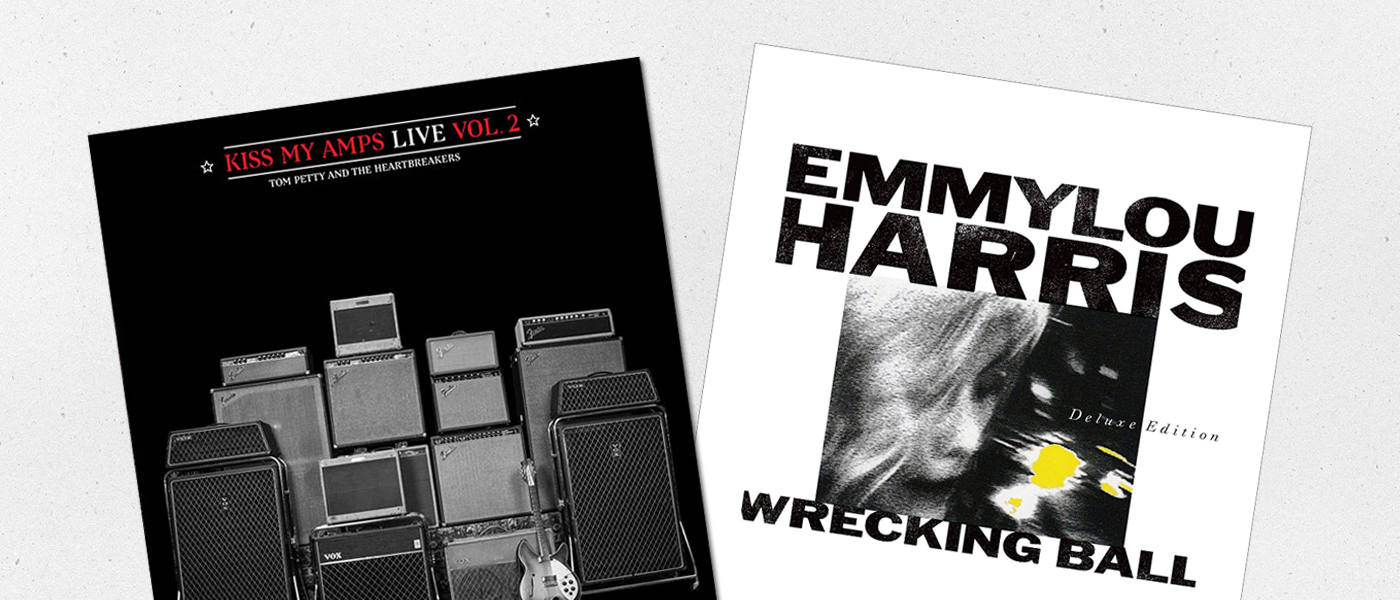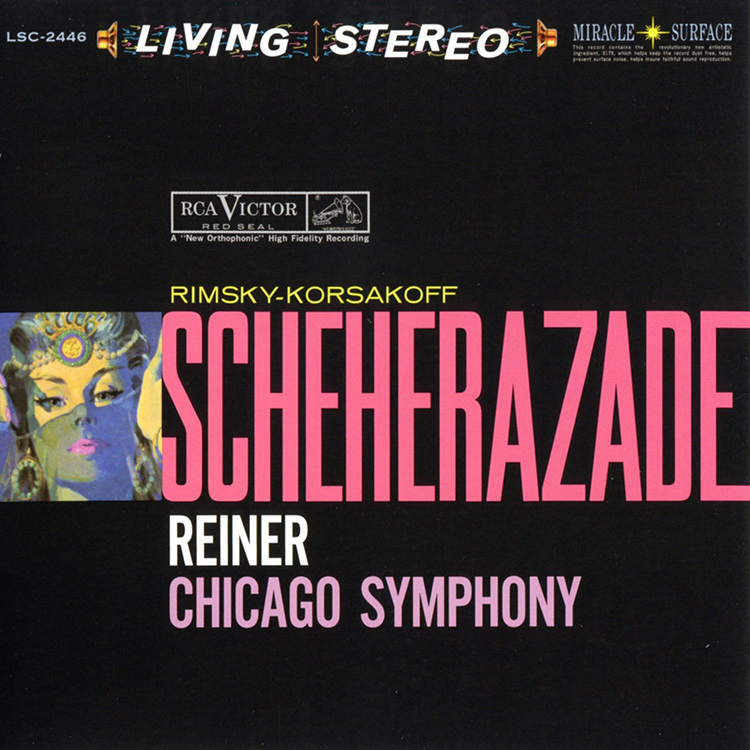
I guess Classic Records did a bunch of the titles about 20 years ago, and there was some debate about whether or not their work could be improved upon. Once Analogue Productions got involved, it was decided that the project would move forward. So, that answers that question. I’ve wanted some more Classical action in my collection to supplement the Brahms box set that I’ve had for years now. My danseur best buddy had turned me onto that composer when we were kids. It’s nice to have something on the shelf to relax with. Sometimes I feel like the sounds help me to unwind from the grad school grind. That’s no easy feat. I’m no authority on Classical performance or composers, but I love to listen. Hopefully, I can translate a bit of that experience into words. I’ve never tried. If you have even a passing interest in this type of music, I can say with some certainty that this is your time. These discs have the magic. Might as well jump, Buck-o.
Secrets Sponsor
According to what I’ve read, Rimsky-Korsakoff’s Scheherazade is one of the most beloved Classical pieces around, and is reputed to be a fine point of entry for newbie’s like me. It’s based on the stories in One Thousand and One Nights (aka: Arabian Nights). It has been described as a “symphonic poem.” Which seems a little silly, but I must say that it does help to clarify the images in my head that the notes create. Things begin bombastically with full orchestration before immediately retreating to an airy, lilting violin solo that’s a lot like dropping a leaf from a tall window and watching the wind take it too far, unexpected locales. That doesn’t last long. Apparently there’s a lot of action in those thousand and One Nights. I’ve not read the text, but things rarely stay quiet for long. This is not the record that I reach for come unwinding time. Lots of swells and crescendos, especially in the second movement, “The Story of the Kalendar Prince,” which closes side one. I guess one should expect Big Drama with titles like “The Ship Goes to Pieces on a Rock Surmounted by a Bronze Warrior,” but there are also warmer, less furious passages located mostly towards the onset of new movements. Playful oboes, balletic strings, supportive cellos. They’re all in play before the “kitchen sink” ethos takes hold. It’s all quite lovely, and I feel especially smart while listening to the work. I think my house plants appreciate it too, but that might be an urban legend. They’re not saying much on the subject, but they’re not actively dying either. We can all aspire to that, I guess.
Secrets Sponsor
This recording is transparent and clear. The Chicago Symphony Orchestra as conducted by Fritz Reiner sounds alive and well in 2016 although these performances were recorded in 1960. I find the music more geared towards an active listen. It forces its way out of the background and demands the listener’s attention. Not quite what I was aiming for, but a compelling discovery for this rookie none the less. This was a toe in the water. I plan to dive in soon. You may want to also.
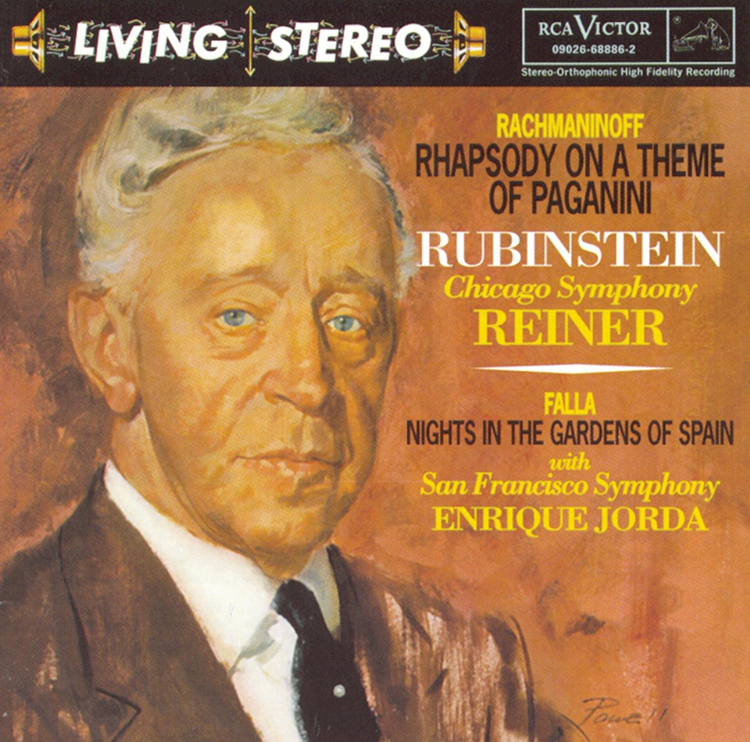
On to round 2…
The Scheherazade record was so overwhelming with sonic goodness that I went right on ahead and grabbed a second title (again on my buddy’s recommendation) based on the strength of the featured pianist’s reputation. That pianist is Artur Rubinstein. The performances are of Rachmaninoff’s Rhapsody on a Theme of Paganini (with Fritz Reiner conducting the Chicago Symphony Orchestra) and Falla’s Nights in the Gardens of Spain (with Enrique Jorda conducting the San Francisco Symphony Orchestra). The works are a little less dramatic than Scheherazade. The Paganini piece, especially, sounds much more intimate and close-up. Almost like you’re sitting with the orchestra instead of in front of it. I’m excited about having these titles in my collection, and I’m looking forward to aggressive, rapid expansion in this arena. One is never enough, right? Not in 2016. Bigger, faster, stronger, and all that…
Here’s something to know: Artur Rubinstein was a maniacal player with an extra set of five hands. This has only been confirmed by my ears, I’ve not seen pictures. The thing to know about Paganini was that he sold his soul to the Devil way before Robert Johnson did. He was a violinist. This is a piano album with some violins involved. The Paganini piece is outwardly balletic. I can see toe shows flittering around a stage washed in reds and yellows. This is playful music, less opaque overall than the Scheherazade piece. At one point, the music resolves into a lush interlude that I’ve heard in at least one commercial that I can’t quite place now. There are still lots of activity, but also room to sprawl out and luxuriate in the tones that are coming out of your speakers at times like fireworks, at others like warm water. Often, Rubinstein’s piano phrasing is answered by some precocious violins that are set a little further back from the main action. There’s nothing inherently dark or dangerous happening here. I suppose that even the Devil has his light days. Overall, side one is ten tons of fun recorded masterfully and with remarkable detail. The Falla piece is lusher, especially as the strings are concerned, with serpentine piano parts that seize the spotlight on occasion, but are usually less overt than on side one. Brass instruments are often used for punctuation with orchestral swells and a more eager vibe. I like the sparser instrumentation and would be interested in finding Living Stereo titles with even less of it. Lucky for me, there’s lots to explore. I can’t wait.
Legend has it that much of the bass was rolled off of these recordings in their original vinyl presentations as the turntables of the day could not track properly without the adjustment. I imagine that you trade the age of the master tapes (which almost assuredly would have lost some airiness up top by now) for the expanded sonic range that more modern equipment is capable of reproducing. I have no originals for comparison, but I can’t imagine that these titles have ever seen more quality pressings. These were done at QRP and are mostly silent when they’re supposed to be and as dynamic as you can handle at all the right times. The Rubinstein record is more apt for a passive listen. It doesn’t demand your unwavering attention like the Scheherazade disc. I’m stoked to have them both, and I’m already plotting my next acquisitions. It’s a Brave New World for me, and I feel like I’m ready. The Devil, as they say, is in the details.
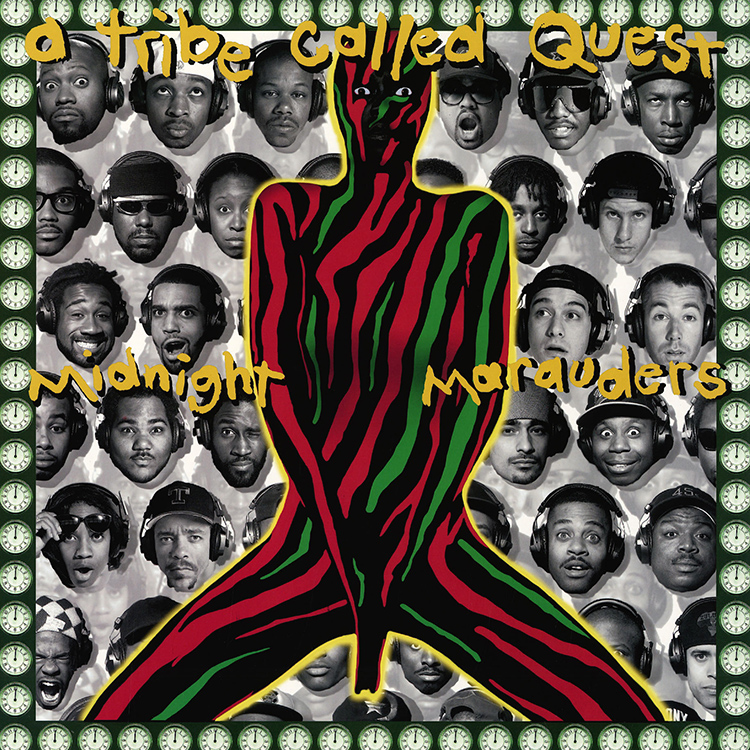
We’ll shift gears, now. Having looked at a couple of Classical titles, we’ll look at a couple of classic Hip-Hop titles. And within the overall theme of musical diversity, the Hip-Hop section has a sub-theme of badass artists that left us too soon.
I can’t remember exactly how I found A Tribe Called Quest, but I know I did it on my own. They were not referred to me. I saw them on one of the late-night Hip-Hop MTV programs way back when music was a part of that channel’s offerings. I picked up their first long player, People’s Instinctive Travels and the Paths of Rhythm, loved it for a long time, then moved on to live Athens, Georgia bands and the groups that inspired them, and turned my back on Hip-Hip for many years. Unfortunately, one of Tribe’s two founding members, Phife Dawg, passed away a couple of weeks ago, and I was reminded about a project that I’d had on the back burner for a few years. I wanted to go back and explore what are considered Tribe’s two most impactful records, The Low End Theory and Midnight Marauders. For the purposes of this review, I went with the latter from 1993. It’s everything I was led to believe. There’s a lot to learn from these grooves. The kids should take note.
Hip-Hop culture, to me, does not often seem too concerned with honoring its past. In my experience, a six-month old album is considered ancient. I read interviews wherein the featured artists quite often acknowledge the genre’s architects, but fans seem more fickle. Midnight Marauder’s cover features the shining faces of a bevy of Hip-Hop artists that were most relevant in the early ‘90s. I can pick out quite a few. A Tribe Called Quest respected not only their craft and the craft of Hip-Hop generally; they also dug deep for the jazziest, most soulful samples. There’s a respect for music that oozes out of these grooves. A vibe that suggests a worldview that values life itself. Q-Tip’s voice is the most instantly recognizable, while Phife’s raps are often more pointed and thoughtful, in my opinion. NWA was already heavy on the scene by then as was Ice-T (who made the Marauders cover), but Tribe had their own thing. And it didn’t overtly involve guns or tough-guy imagery. There’s a ton of humor and political savvy up in here, but the music and flow is the star of the show. There are no songs on Marauders that jump out to me above all others. Nothing that’s going to cause me to repeat tunes to the exclusion of their brethren. This is a cohesive work with a laid-back, fun vibe. Lots of comical interludes and narration. Surprisingly, this record fulfills more of the role that I was initially looking to the Living Stereo titles for. Marauders might cause you to melt into a pool of “Electric Relaxation” if not for the lyrics that keep you honed in and present. The record rewards repeated listens as you may recognize an obscure sample (like the Meters’ “Handclapping Song”) or a clever lyrical turn that you missed the first time(s). There’s gold in the hills, but sometimes you gotta dig. The payoff is great. Don’t whiff.
There’s nothing special about the vinyl presentation of this stellar recording. It sounds fine. Some pops and ticks here and there. It’s been available for years. Hopefully, someone will spruce these titles up one day. The quality of the work, and history, demands it.
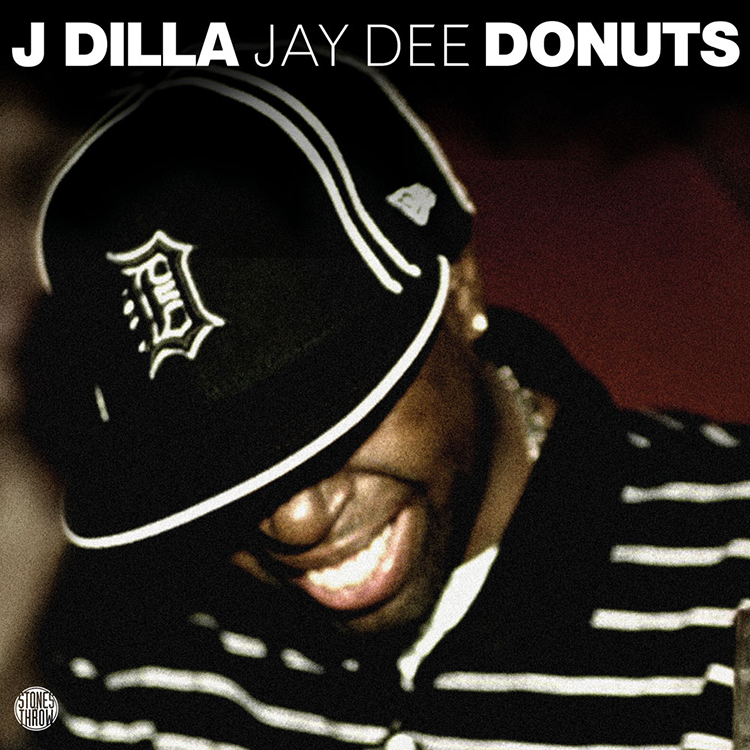
J Dilla actually became a member of latter era Tribe’s production team. As I understand it, he played a key role in that group’s final two albums. (I have The Love Movement, and I’m glad I do). There’s a nifty documentary out there about Stones Throw records (it’s called Our Vinyl Weighs a Ton) which is how Dilla came to my attention. I didn’t exactly have my ear to the ground during Detroit’s mid-‘90s heyday, and that’s exactly where Dilla made his name. The doc features the Mouth That Roared, Kanye West, espousing Dilla’s genius for making tricky beats. But don’t let that dissuade you. Dilla’s Donuts is a bonafide Hip-Hop high water mark from an era that produced many.
Interestingly, I saw My Morning Jacket’s Jim James promoting this record’s wickedness in an online interview recently. His tastes can get pretty out there, but he and I are right in line on this one. Donuts is what I was looking for when I found DJ Shadow’s Endtroducing… a few years back. I like that record a lot, but Donuts is what I need. It’s mostly instrumental. I’m sure countless other artists have plumbed its depths and come up with treasures of their own. This is one that you can leave playing in the background, but something is going to pull you in every time. Make you stand up, take notice, and focus. It’s another one that rewards repeated listens. Like watching Angel Heart. It’s tough to take in on the first go, but it makes sense once you get your bearings. Dilla made Donuts, unbelievably, while in the hospital dealing with a terminal blood disease. It was released on his 32nd birthday, and he passed away three days later.
Writing about Donuts is tough. You really need to experience it. It stands on its own, even without knowledge of its history as an album produced under the most extreme duress. I consider my knowledge of popular music (at least up until the early ‘90s) as borderline encyclopedic. I have a few friends that can go toe to toe with me, but I have more that come to me for musical recommendations and direction. (There is also a contingent of folks who think that I don’t like music at all because they want to talk about what’s on the radio. So it goes.) But I could no more tell you where A Tribe Called Quest and J Dilla got their samples than I could tell you how to make Peking duck. These guys were working several levels above the most avid crate diggers. (To be clear, I am not one of those. Disorganized record stores don’t make sense to me.) Sometimes things get so layered; you can’t even pick up on the samples that you are familiar with. Somehow, you know that Donuts is working in ways that you can’t comprehend, but you get the point loud and clear. I can’t imagine what J Dilla would be into at this point, but I bet it would be impactful. He’s got something coming out on Record Store Day next month. He’s not going away. Thankfully.
Like Marauders, someone needs to take some time with this record. My version is poorly pressed and noisy. Luckily, the ticks bleed into the sound at times and it’s hard to tell if they’re in the pressing or the actual recording. He’s reported to have used real life records during the making of this album so it’s possible that some of the static was in those discs and not this one. It’s essential, regardless. There’s even a newer version with updated cover art. Go for that one. It might be quieter.

Finally, and thankfully, we get to wrap up this month’s whacky goings on with our take on Freddie Hubbard’s Hub-Tones as done by the geniuses at Music Matters Jazz. I am absolutely not being facetious when I say that. The things that Kevin Gray is doing for that label and those Blue Note titles is going to stand up for a long, long, lonely, lonely time. The decision makers at Music Matters are not reissuing every Blue Note title available, and I trust them implicitly by now to tell me which ones are worth having and which I can neglect. They’ve pitched a shut-out over the course of a few years now, and I truly feel fortunate to be collecting vinyl while they are doing their thing. Hub-Tones is another one, man. An upper-decker. You can pretty much mail that in by now, Chieftain.
This one starts out in the lounge with Hubbard’s trumpet sneaking around and exploring the spaces within Herbie Hancock’s piano work on “You’re My Everything.” I wasn’t around when Jazz was great, and the titles of the sub-genres never quite describe what my ears are taking in, but this sounds Cool to me. I don’t, however, think it would be considered Cool Jazz. Whatever. Those labels are for hacks like me that aren’t talented enough to make the music, just needed enough to attempt a point of entry through silly words. This song was committed to tape with all of the care and precision that you would expect from a Music Matters offering, but James Spaulding’s sax solo on the opener is so present and real that it’ll scare you at first. Even knowing what I know about what these folks produce, I wasn’t ready for the level of clarity and detail in that damn horn. It’s full-on disorienting. Things stay quiet on “Prophet Jennings” which features this album’s debut of Spaulding’s flute. This is an instrument I can historically do without. Or I could until now. Makes me wonder if there is some steel drum music out there that I could listen to. Maybe that would be the challenge to finally expose a chink in the Music Matters armor. But I doubt it. Things start really cooking on the title track. There’s a coordinated intro amongst the players before Hubbard outright gets with it. I suspect that being Hubbard in this era would have been analogous to being the San Antonio Spurs today. They’re one of the best teams in history, but you wouldn’t know it because everyone wants to talk about the Golden State Warriors. When folks talk about trumpets, they talk about Miles. Don’t sleep on Hubbard. His phrasing is fluid and unique. And his tone is as buttery as… butter, I guess. Side Two starts cool (“Lament for Booker”) and ends hot (“For Spee’s Sake”). The whole thing reminds me of coastal California. There are so many textures and scenes to explore that you can’t take it all in on the first try.
Hub-Tones is one of my favorite titles that I’ve found through the Music Matters reissue campaign. That seems like something I’ve said a million times, but it’s been my truth. The pressing is as quiet as you’d expect by now, and the artwork is museum ready. If you’re a Jazz fan or a fan of well-recorded music in pristine presentations, then you need these discs. Hear me now and believe me later.


